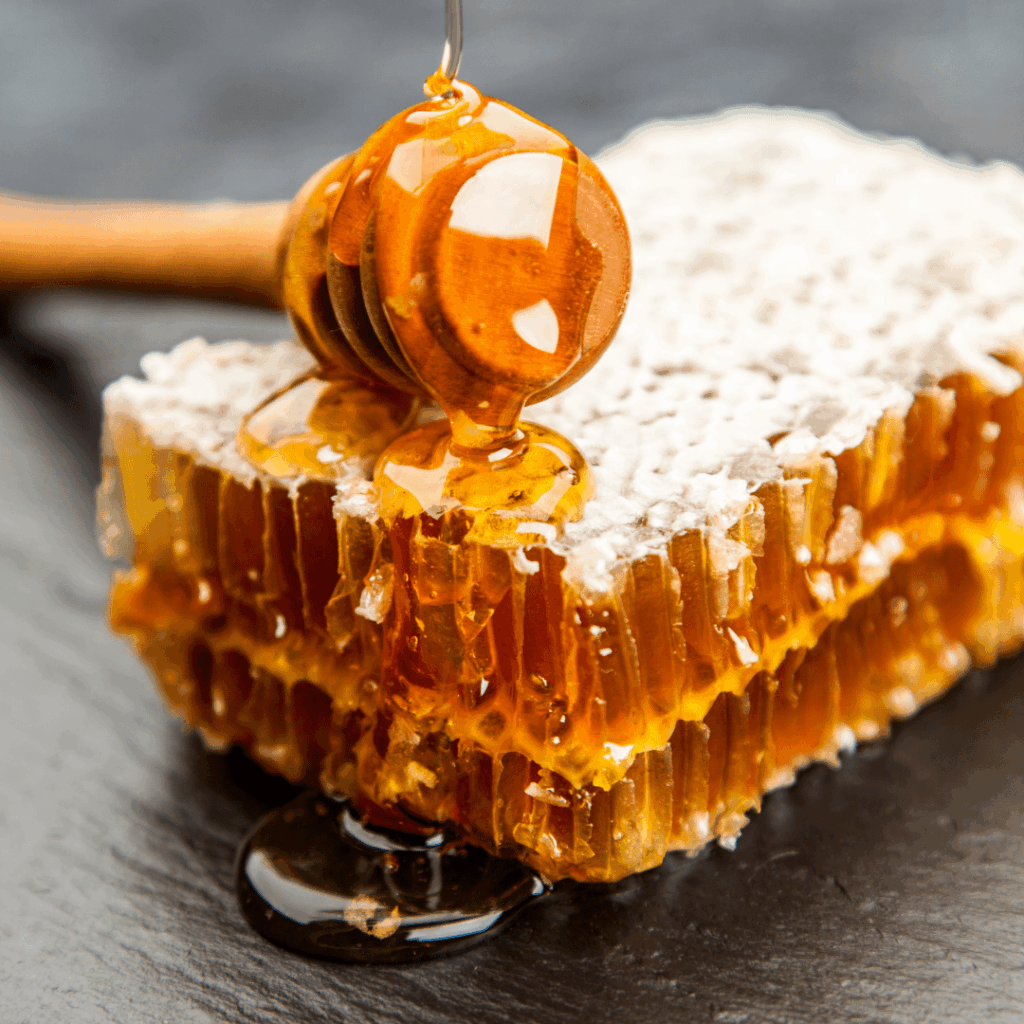In recent years, “raw honey” has become a buzzword on supermarket shelves and health blogs alike. But in the UK, the term is often misunderstood, misused, and unregulated. If you’re buying honey for its health benefits, flavour, or to support sustainable beekeeping, it’s important to understand what raw honey really is – and isn’t.
Let’s clear up the confusion and explain why real raw honey matters, especially in the context of supporting native bees and local ecosystems.
What Is Raw Honey?

In the truest sense, raw honey is honey that has not been heat-treated or ultra-filtered. It comes straight from the hive, strained only to remove bits of wax or debris, but retains:
- Natural enzymes like diastase, invertase, and glucose oxidase
- Trace pollen grains that reveal its botanical origin
- A wide range of micro-nutrients, antioxidants, and prebiotic compounds
It crystallises naturally over time and often appears cloudy or creamy – a sign of authenticity, not impurity.
The Problem with Supermarket “Raw” Honey
In the UK, the term “raw” is not legally defined or protected. This means any honey – even heavily processed, imported, or blended varieties – can be labelled “raw” with little accountability.
Most supermarket “raw” honey has:
- Been heated to improve shelf life and delay crystallisation
- Been ultra-filtered, removing the very pollens and enzymes that make honey raw
- Been blended from multiple countries, reducing traceability and often masking the use of lower-quality imports
👉 Bottom line: Just because it says “raw” doesn’t mean it is.
Why Real Raw Honey Matters
1. Nutrition
Raw honey contains bioactive compounds that support digestion, wound healing, and immunity. These are often destroyed by heat in industrial honey processing.
2. Flavour
Supermarket honey is often homogenised and bland. Raw honey from a local beekeeper reflects the floral diversity of your region – from spring hawthorn to autumn ivy – offering complex flavours you won’t find in imported blends.
3. Bee Welfare & Sustainability
When you buy raw honey from a local beekeeper who:
- Works with native or near-native bees (such as Apis mellifera mellifera),
- Avoids chemical treatments and imports,
- Allows bees to keep enough of their own honey for winter,
…you’re supporting sustainable beekeeping practices that prioritise bee health over profit. That’s a world away from industrial-scale honey farms that ship queens across borders and overexploit colonies.
Protecting British Bees, One Jar at a Time
The European dark bee (Apis mellifera mellifera) is Britain’s native honey bee, evolved to thrive in our variable climate. But this subspecies is under serious threat from:
- Imports of foreign bees (like Buckfast and Carniolan types)
- Hybridisation and genetic dilution
- Commercial breeding practices that ignore local adaptation
Buying genuine raw honey from beekeepers working with locally adapted or AMM bees directly supports:
- Native bee conservation
- Better disease resistance (especially to Varroa)
- Resilient, self-sustaining bee populations
These are the very bees that helped shape our rural landscapes for centuries. They need our support now more than ever.
Final Thoughts: Choose Raw, Choose Local
Raw honey isn’t just a health food trend – it’s a connection to nature, a statement of environmental support, and a delicious result of ethical, place-based beekeeping.
So next time you’re tempted by a sleek jar on a supermarket shelf, ask yourself:
- Where did this honey really come from?
- Is it supporting bees – or just branding?
The truth about raw honey in the UK is this: If you want real honey, buy from a real beekeeper.
Looking to Try Raw Honey?
Find a local beekeeper who:
- Keeps bees without imports or chemicals
- Works with local bees or native strains like Amm
- Can trace their honey to a specific apiary and season
